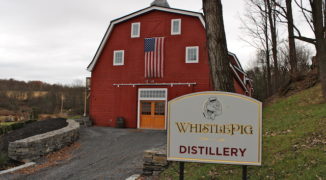Renowned New Orleans painter and sculptor James Michalopoulos began building small test stills for distilling rum in the Bywater and Lower Seventh Ward areas some 20 years ago. His experiments led to the creation of Celebration Distillation, and in 1995, he purchased a 150-year old cotton warehouse to house his distillery. Celebration Distillation now proudly produces three varieties of Old New Orleans Rum.
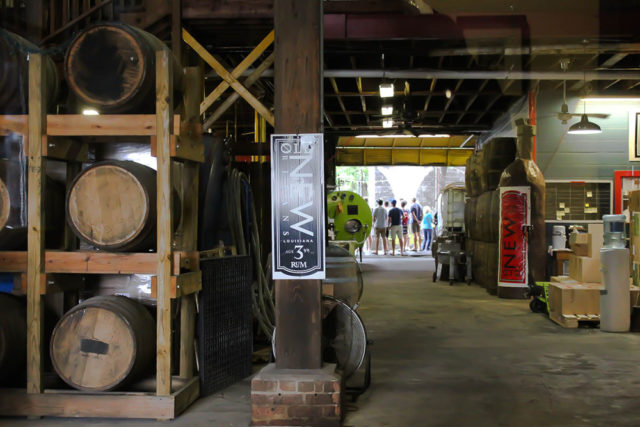 Celebration Distillation is the oldest operating rum distillery in America. Photos by Martine Boyer.
Celebration Distillation is the oldest operating rum distillery in America. Photos by Martine Boyer.
Despite being flooded by eight feet of water during Hurricane Katrina and enduring a massive renovation to get back in working order, Celebration Distillation is in its 20th year, and holds the title as the oldest operating rum distillery in America.
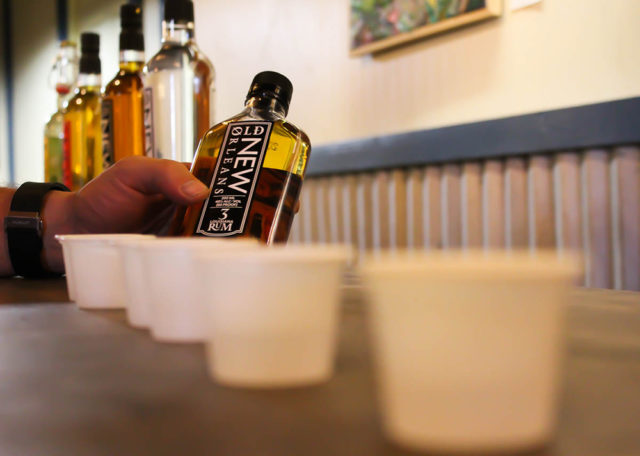 The joy of visiting Celebration Distillation is in tasting the Old New Orleans Rum, which is a prime showcase for one of Louisiana’s primary crops, sugar cane.
The joy of visiting Celebration Distillation is in tasting the Old New Orleans Rum, which is a prime showcase for one of Louisiana’s primary crops, sugar cane.
Rum begins as sugar cane and, as the second largest cane producing state in the country, what better way to showcase a local Louisiana product than through the distillation of rum? The process itself is simple: sugar cane becomes molasses, which, through a fermentation process, becomes rum, which is then aged to the desired flavor.
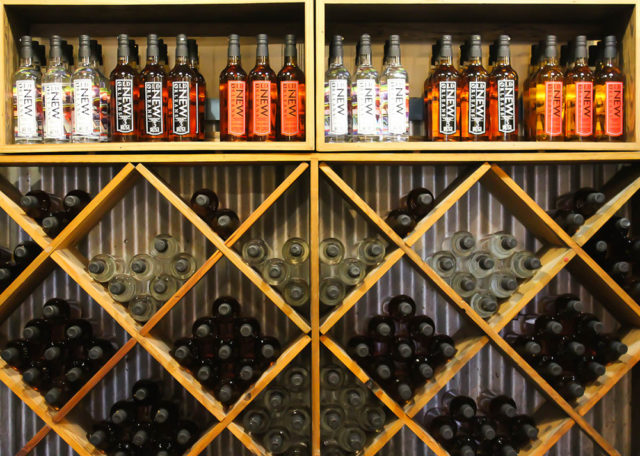 Simplicity is the secret to excellence for Old New Orleans Rum.
Simplicity is the secret to excellence for Old New Orleans Rum.
In the case of Old New Orleans Rum, simplicity is key to quality and flavor. They incorporate locally sourced molasses from LaFourche Sugars in Thibodaux, repurposed dairy manufacturing equipment used to build custom tanks and stills, and American oak whiskey barrels from the likes of Jack Daniels, Maker’s Mark and Four Roses. Celebration Distillation is one of only three distilleries in the country that use repurposed machinery.
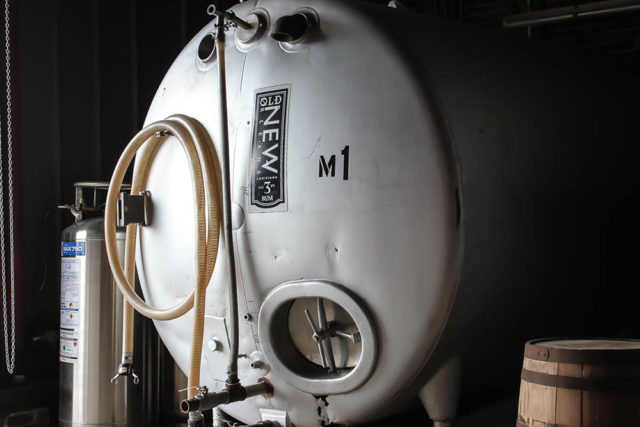 Most of the process happens inside of large steel tanks (like this one).
Most of the process happens inside of large steel tanks (like this one).
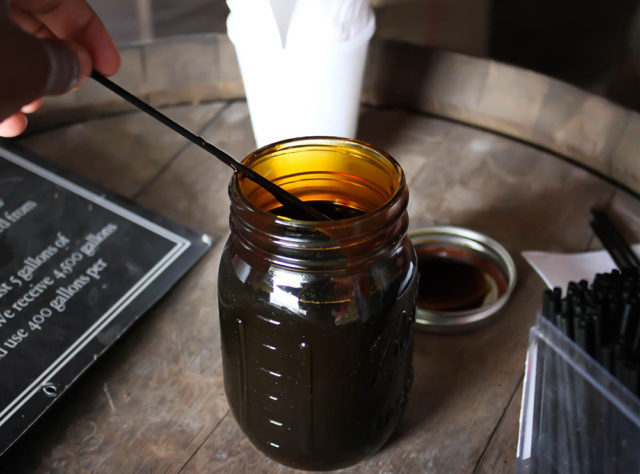 Sugar cane is pressed several times to create molasses.
Sugar cane is pressed several times to create molasses.
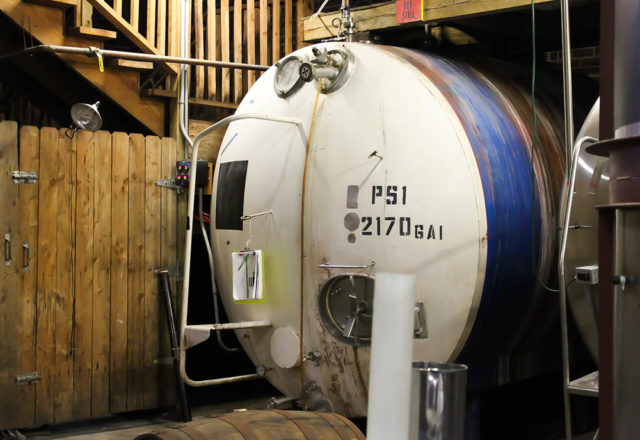 The molasses is then pumped into a PS1 copper line pot for the first stage of distillation.
The molasses is then pumped into a PS1 copper line pot for the first stage of distillation.
PS1 — a copper line pot — is the first pot still in which molasses is mixed with water, yeast, and nutrients and left to ferment for about two days until it yields an ideal alcohol content of 10%. This is called “low wine.” Three fermentations are run through PS1 over the course of a week, one fermentation at a time.
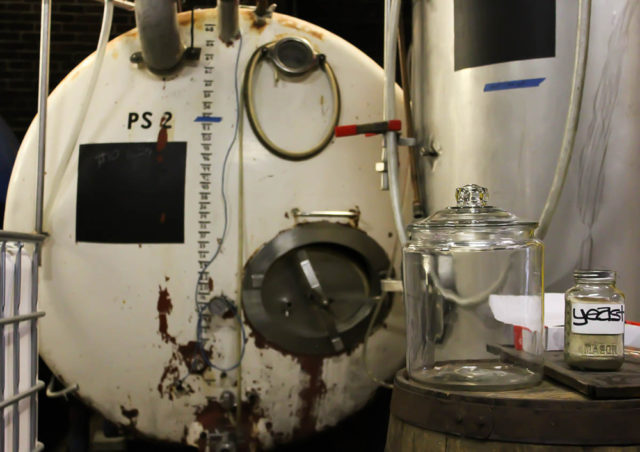 After the first phase of distillation, the low wine is transferred to the PS2 to be distilled at a higher temperature.
After the first phase of distillation, the low wine is transferred to the PS2 to be distilled at a higher temperature.
These three fermentations of low-wine are then collected and transferred to PS2 to get distilled at a higher temperature in order to produce a higher content alcohol, similar to moonshine. This product then becomes “high wine.”
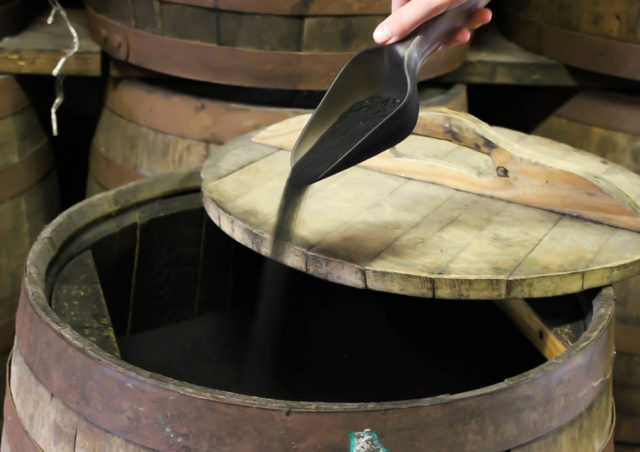 Charcoal is used to filter the high wine.
Charcoal is used to filter the high wine.
High wine is charcoal-filtered to remove the impurities and polish the rum; in other words, to refine it to perfect flavor.
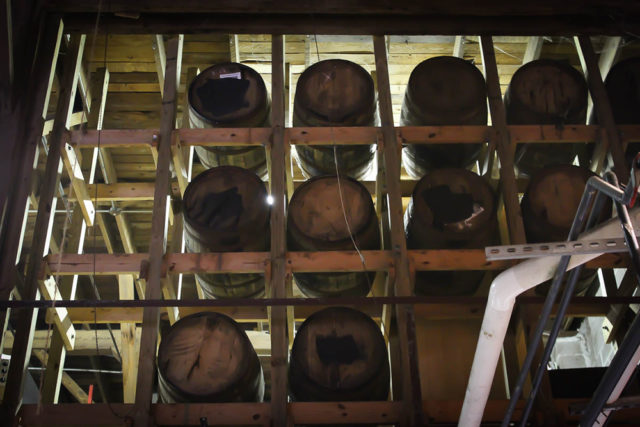 Old New Orleans Rum is aged in oak barrels.
Old New Orleans Rum is aged in oak barrels.
The rum is then blended with ionized water to 80 proof, and transferred to oak barrels to age from anywhere from three to fifteen years. Blended rums, such as the Gingeroo or Cajun Spice, are blended for flavor directly after ionization and then transferred to oak barrels to age.
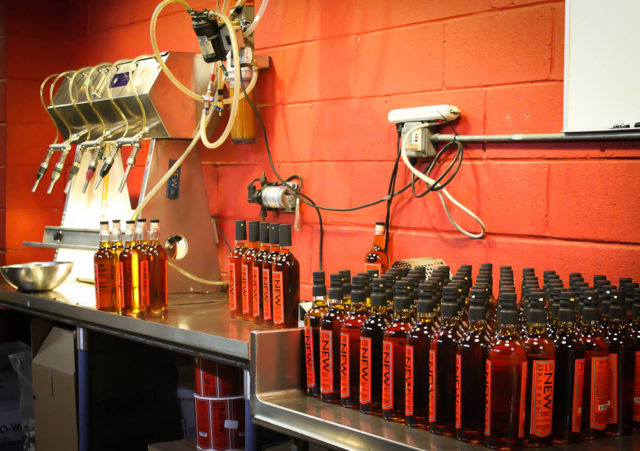 The bottling room is where most of the action is.
The bottling room is where most of the action is.
The fermentation tanks are the heart of the operation, quietly ticking away, while the bottling room is where most of the physical activity happens.
The rum is bottled, capped, labeled, and packed into boxes for distribution.

Tucked into the sleepier, and less visited, side of Frenchman Street, Celebration Distillation may be a bit off the beaten path, but it’s well worth the journey.


